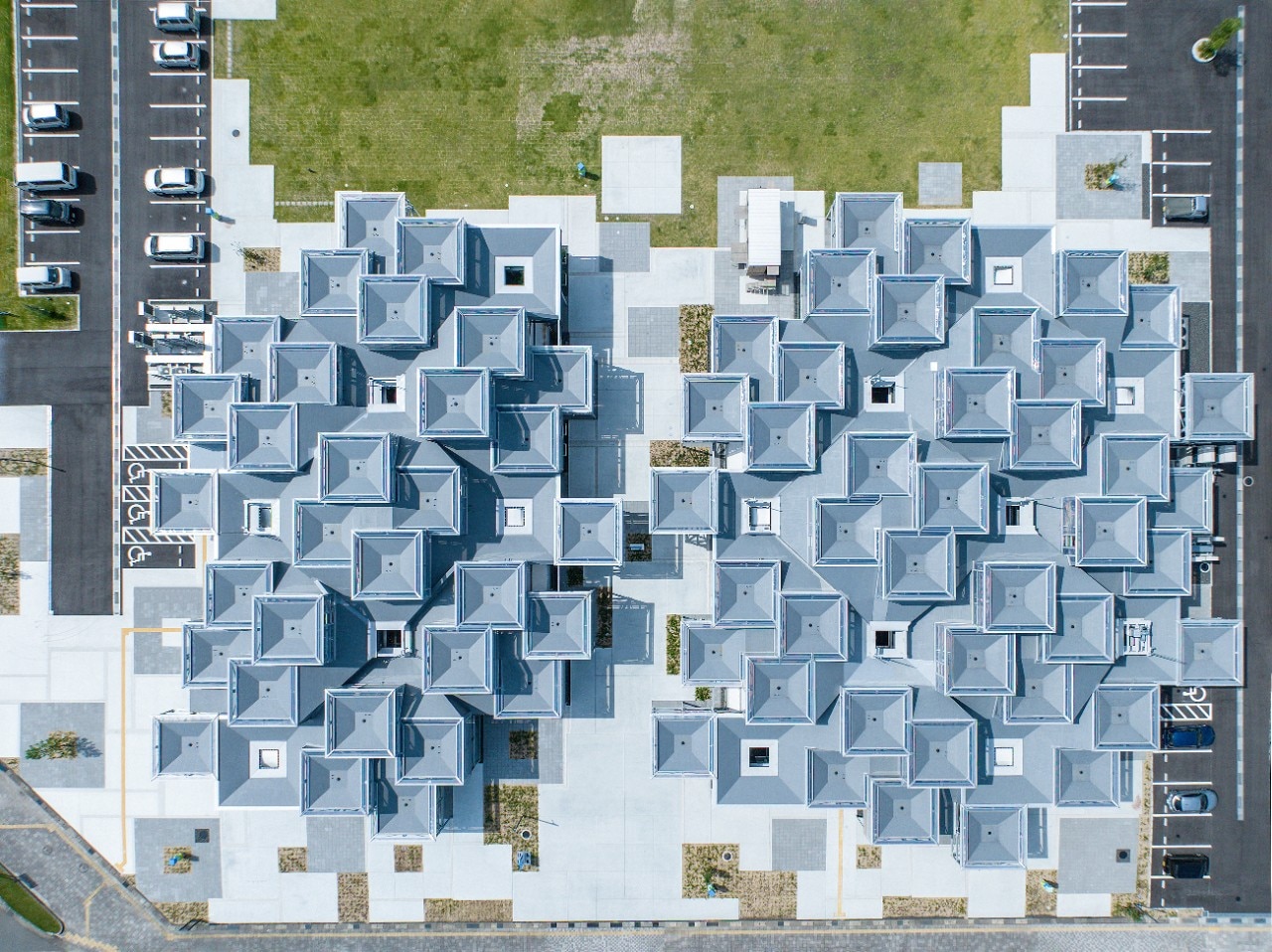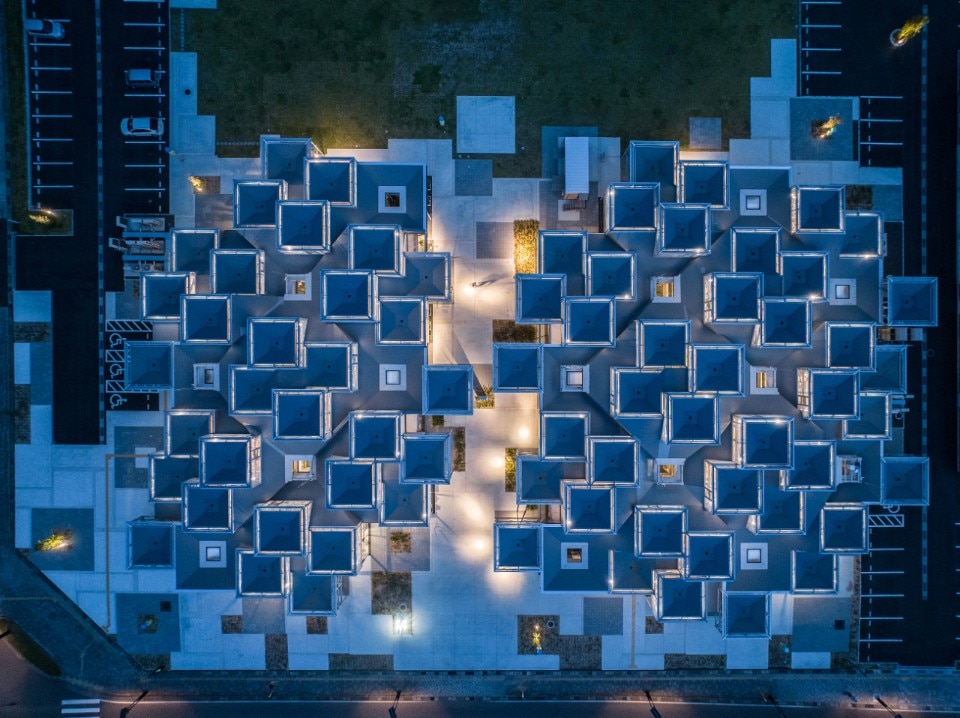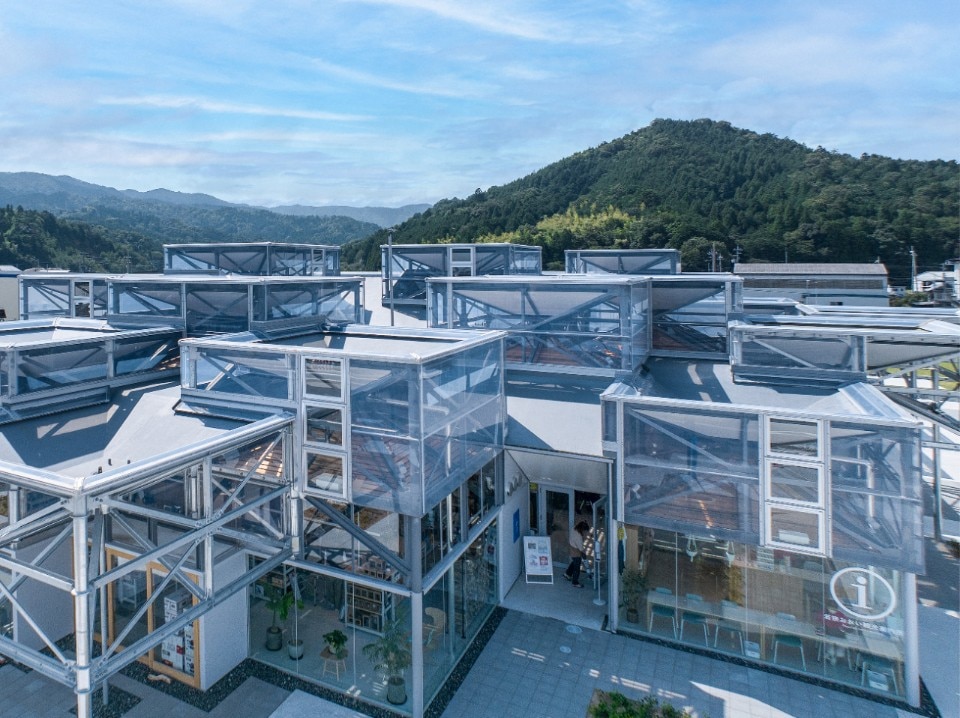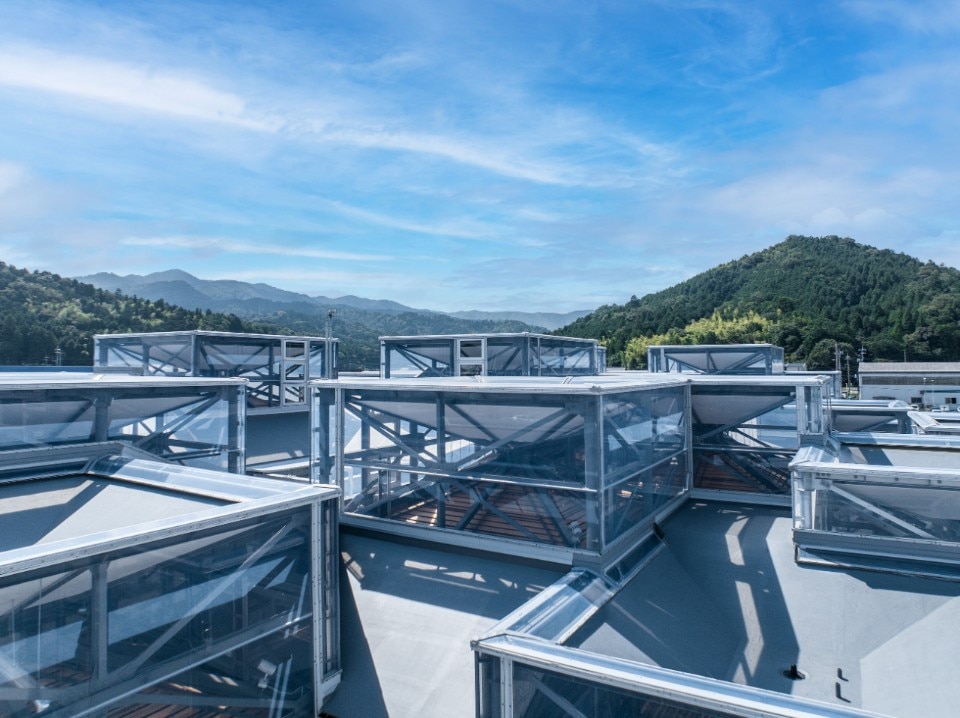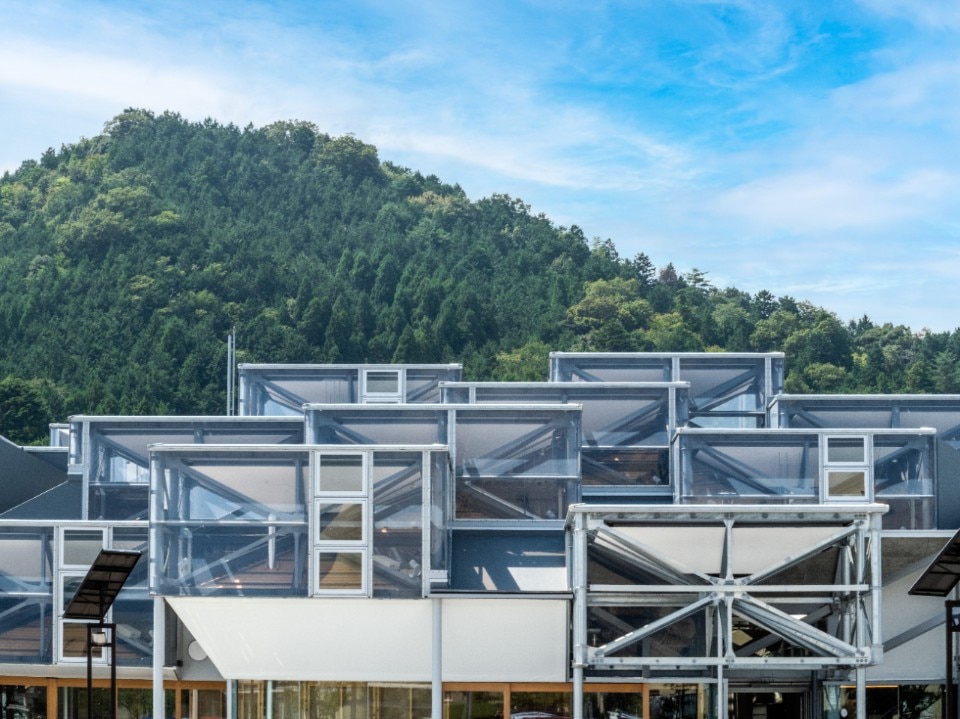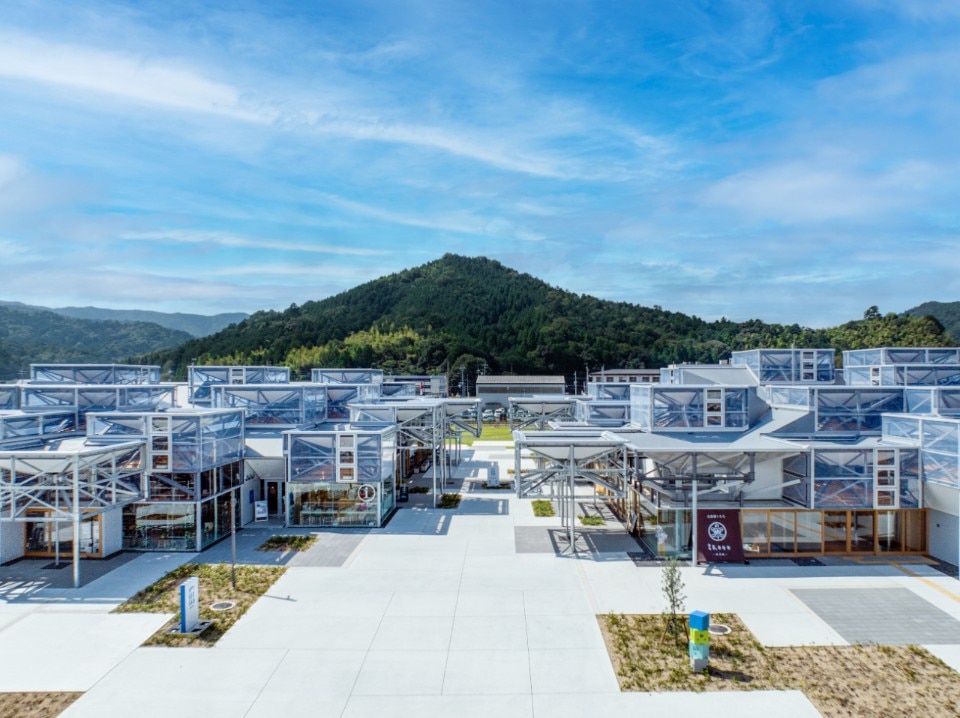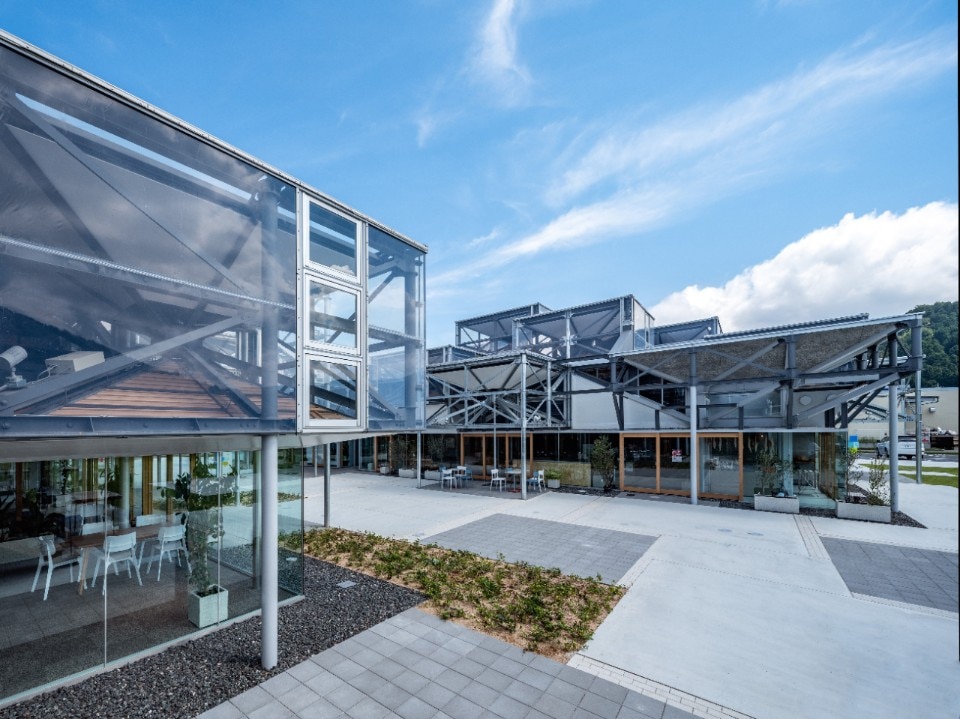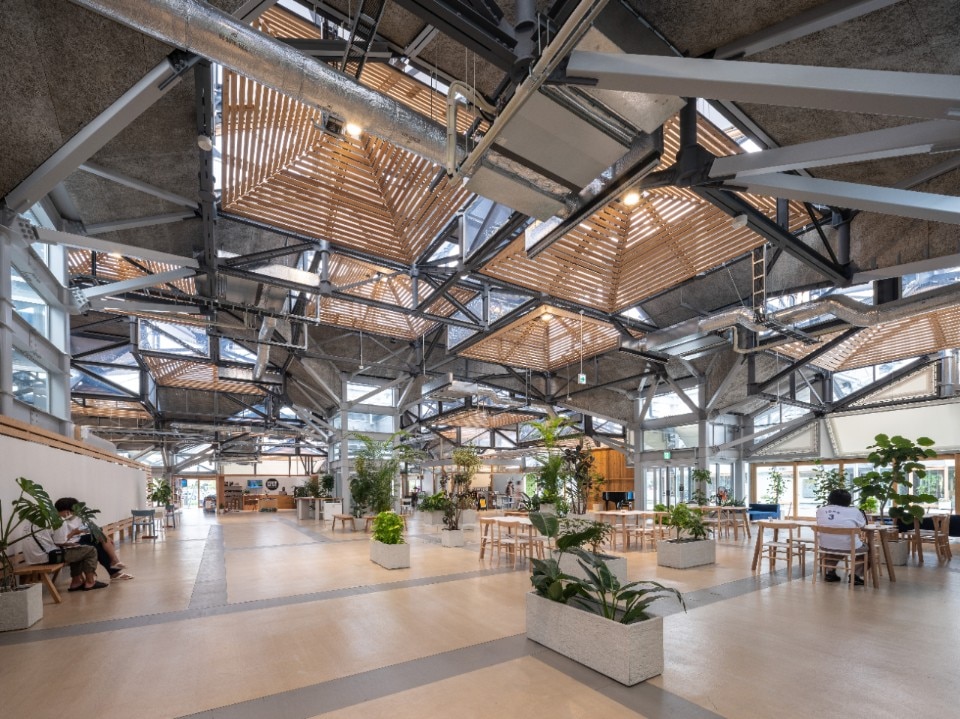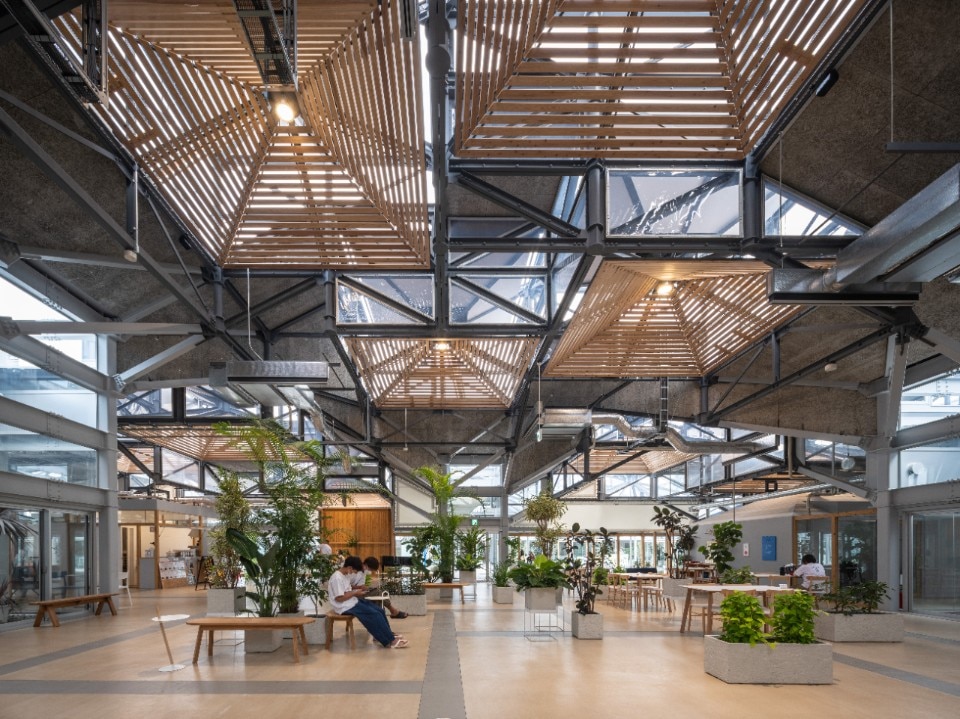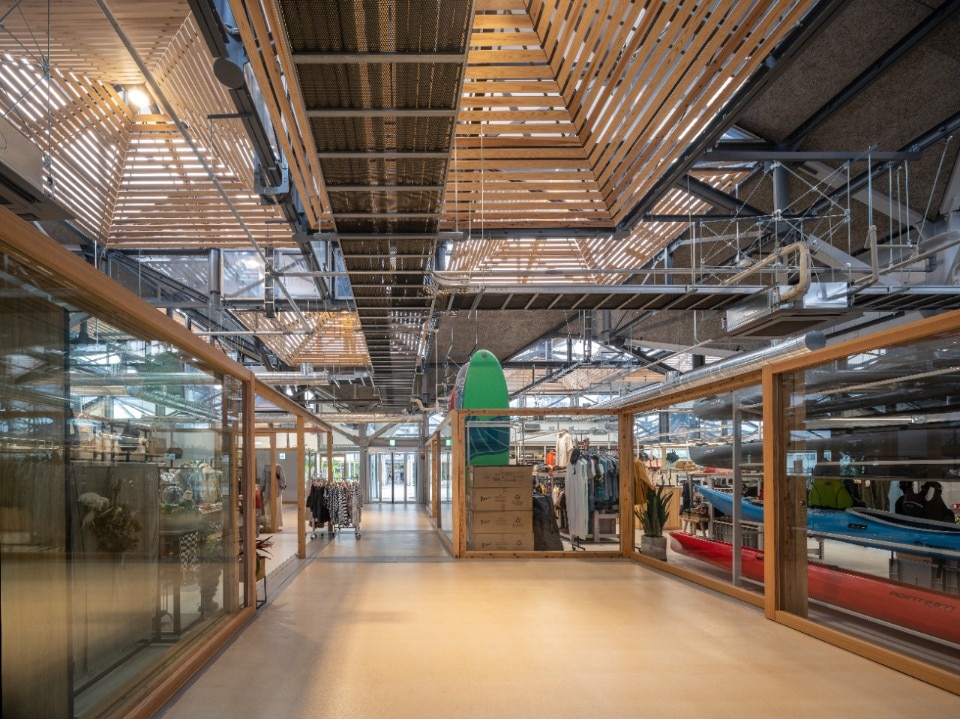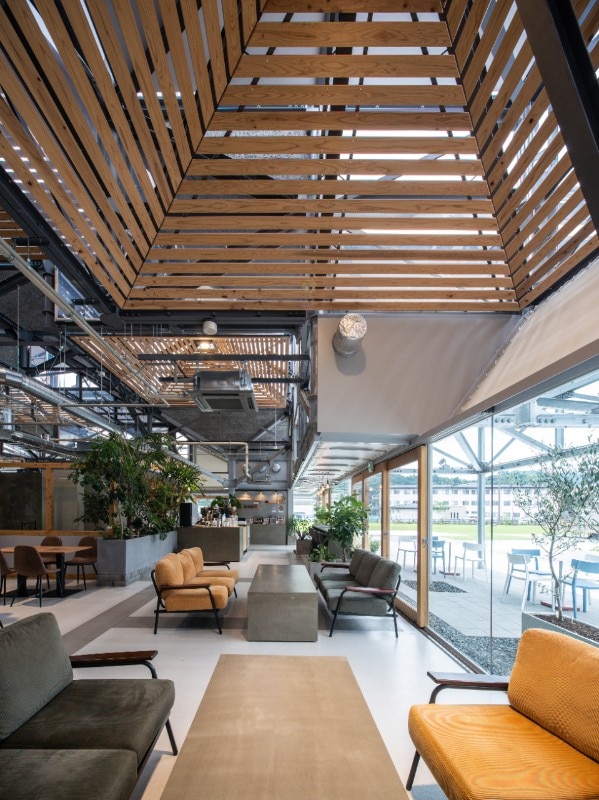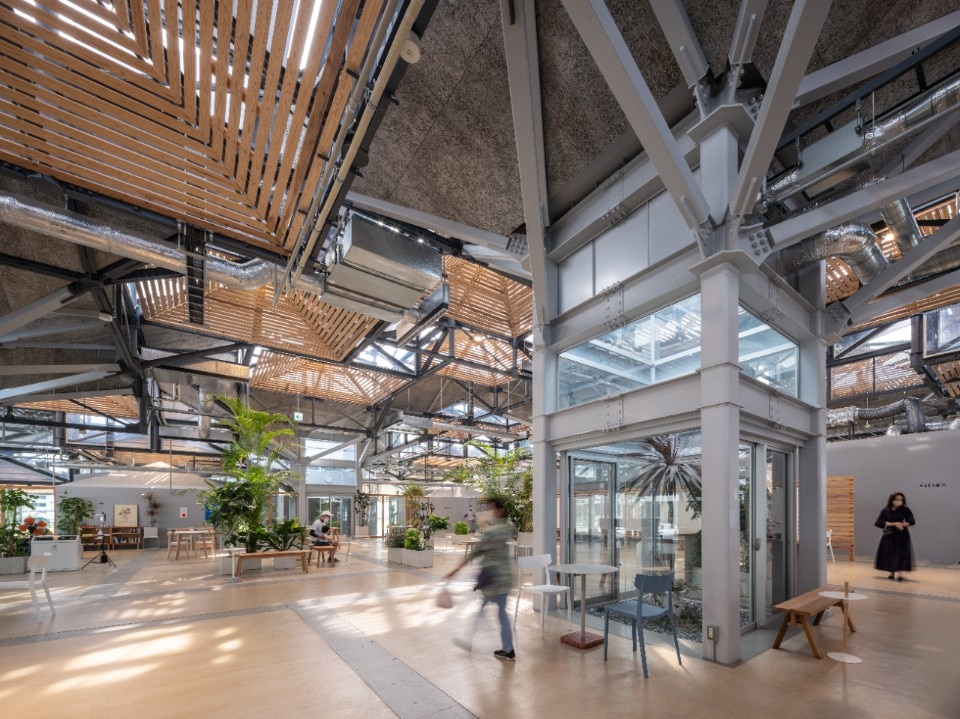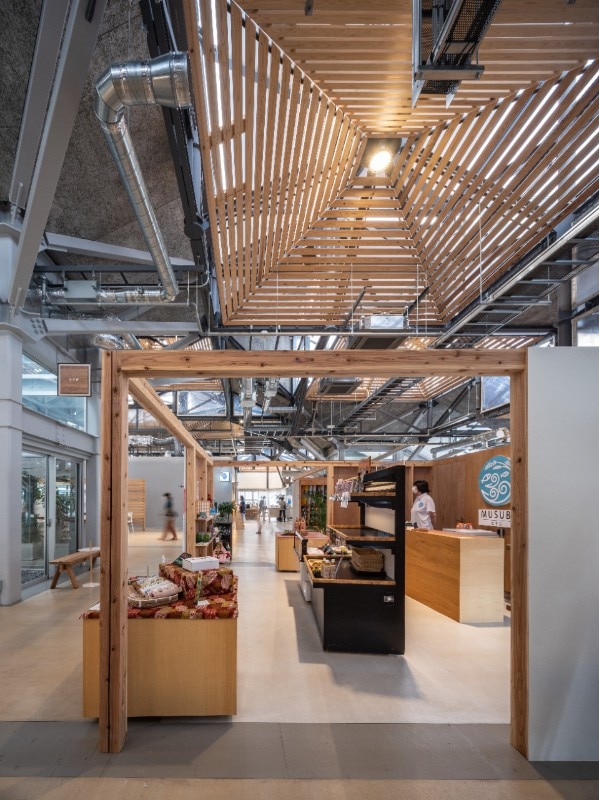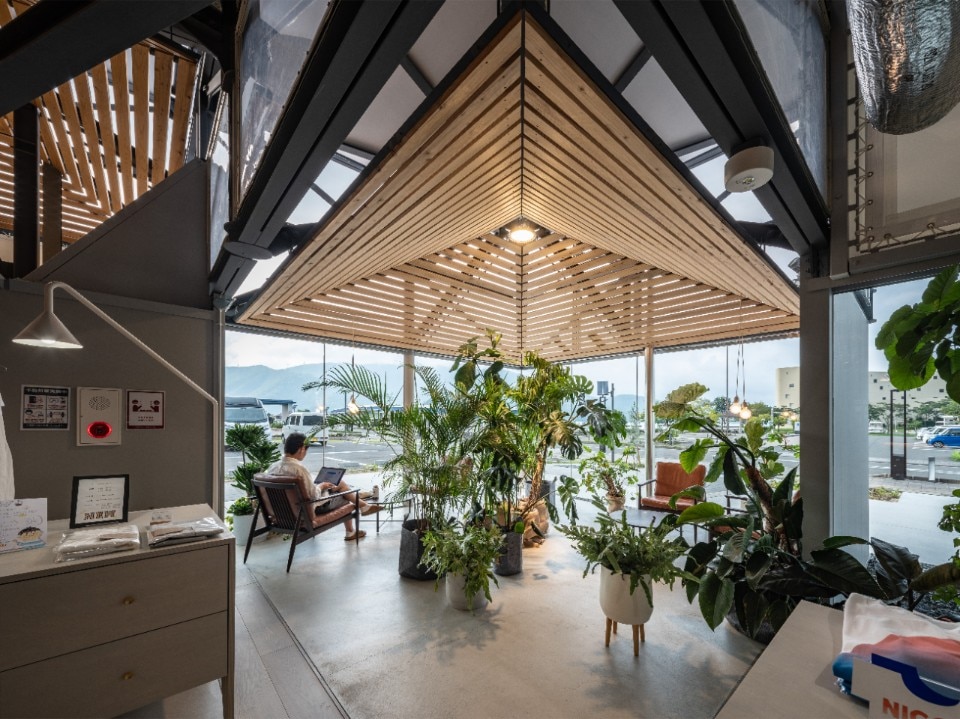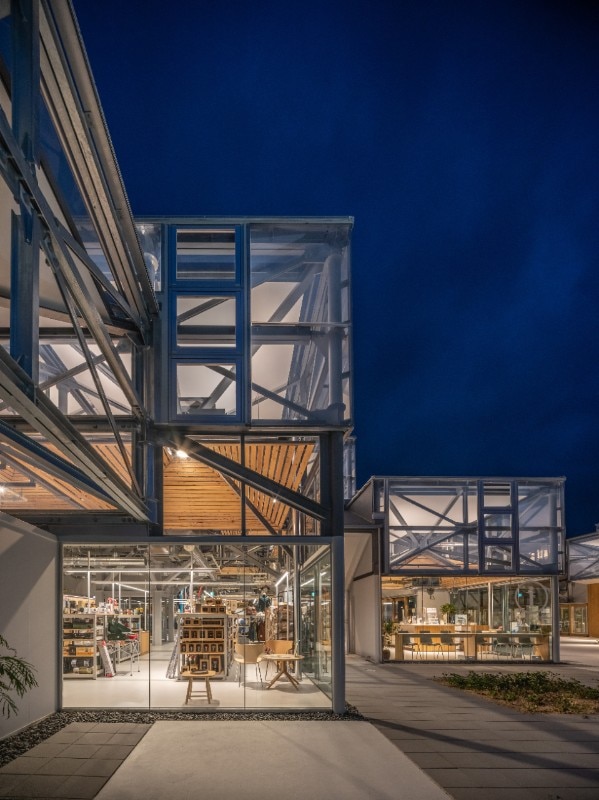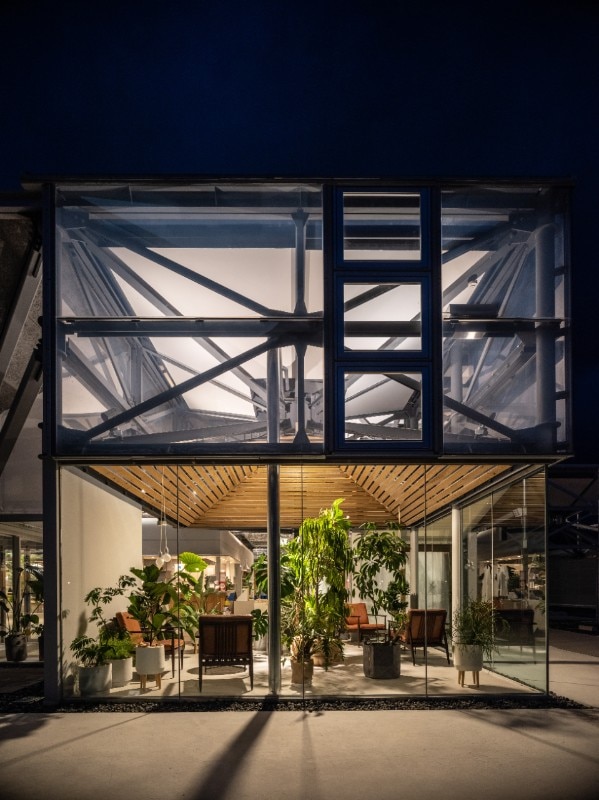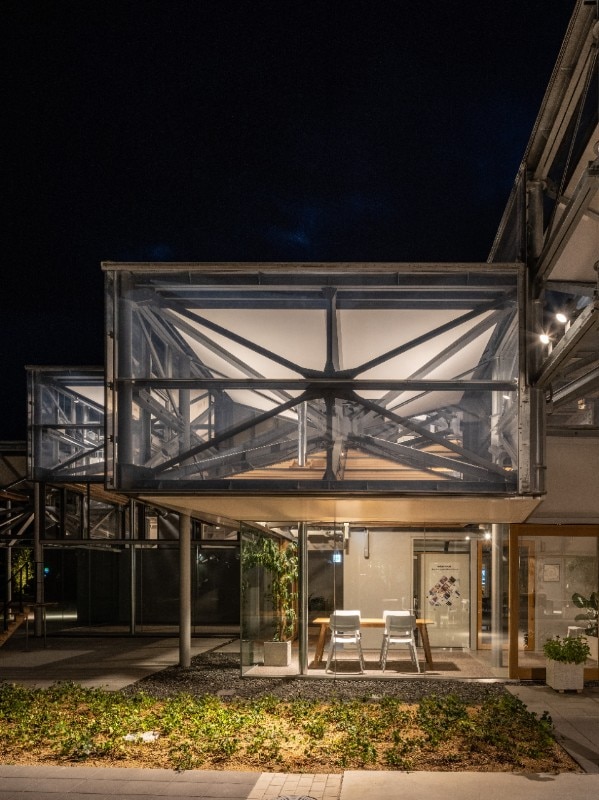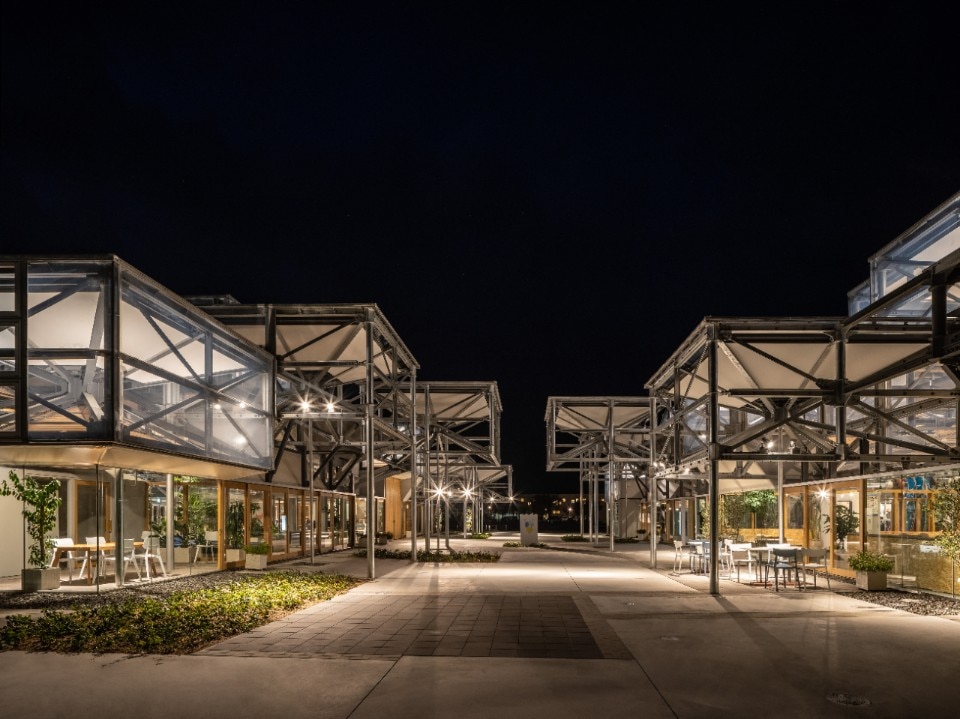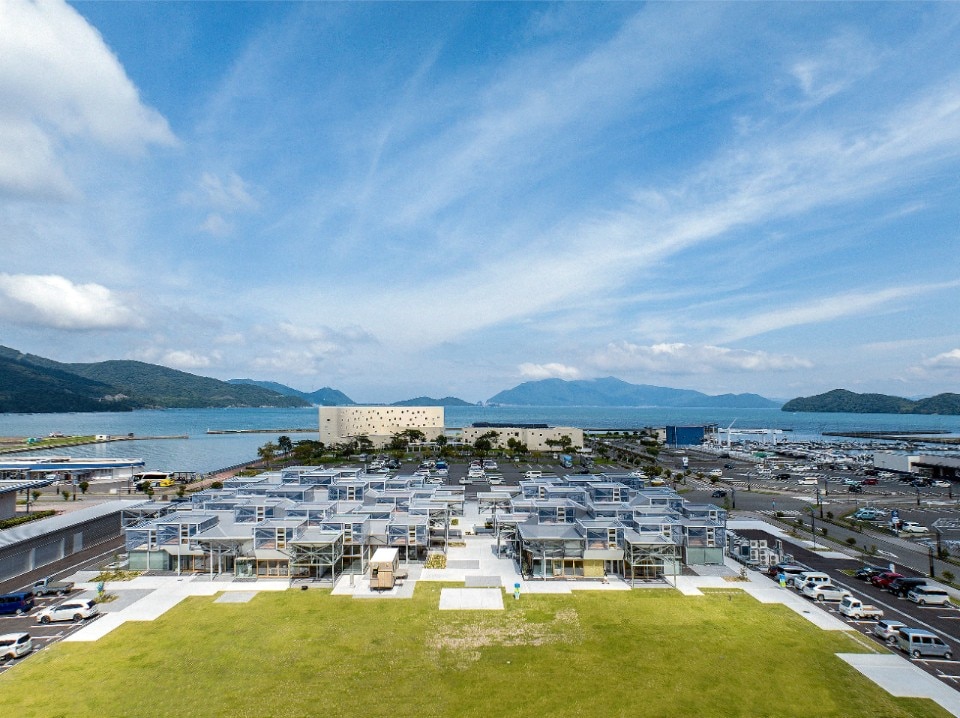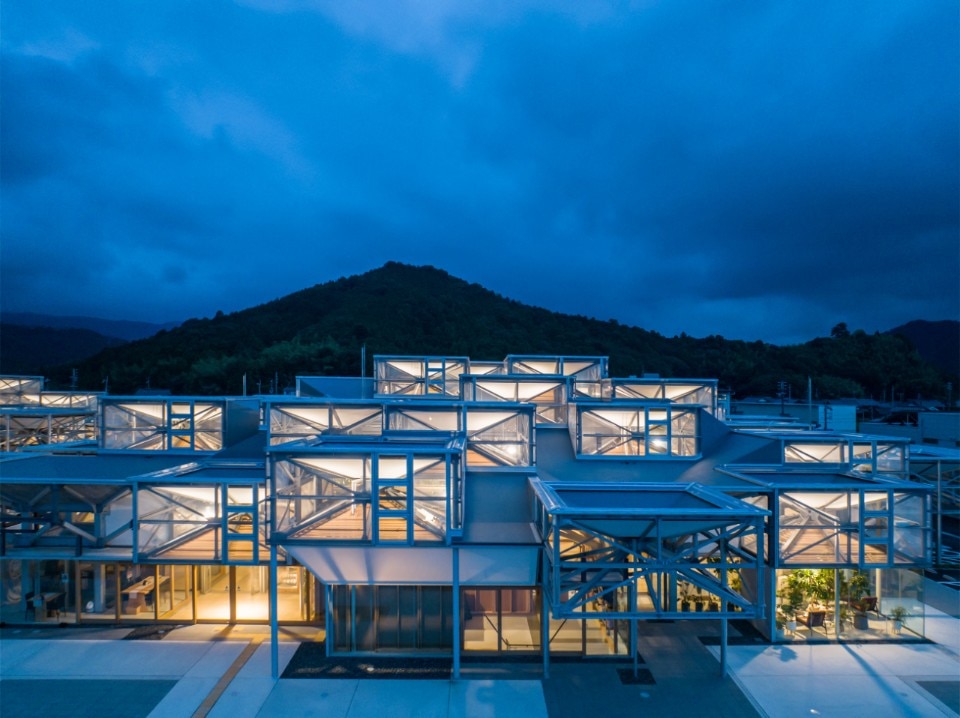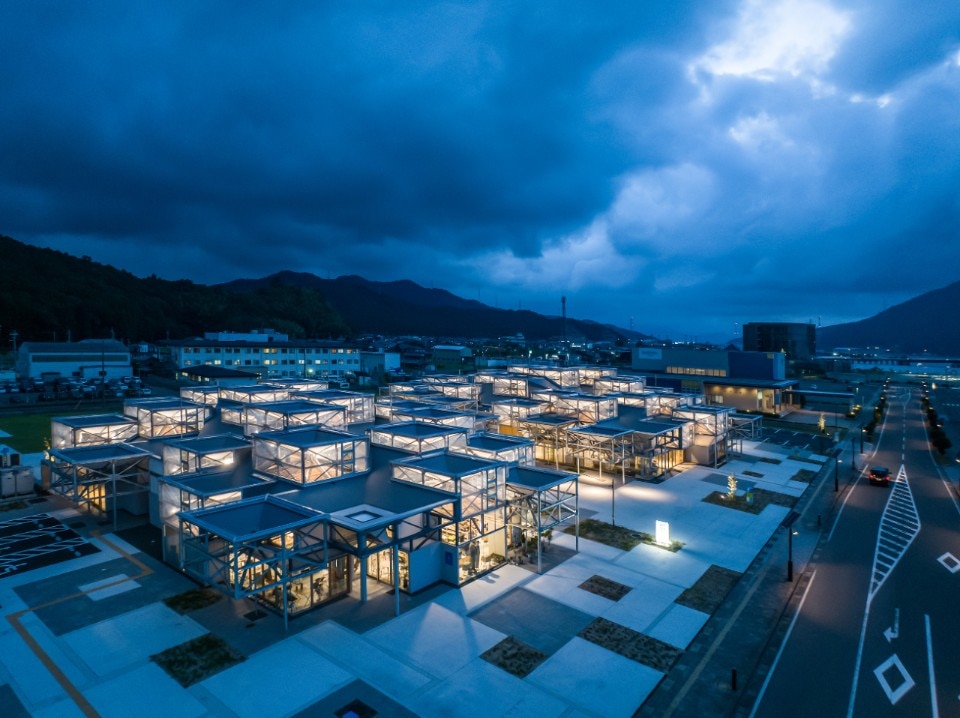This article was originally published on Domus 1087, February 2024.
The structure designed by the studio of Osamu Morishita is immersed in a typically Japanese landscape, in an area facing the Sea of Japan on the coast of Fukui, at the centre of the country’s archipelago. Enriched by the cycle of the seasons, the site is animated by people swimming in summer and it is covered in snow during winter. Gentle winds blow in the spring, and a variety of delicacies from the ocean and mountains can be enjoyed in autumn.
The success of See Sea Park is the result of a design that focuses on nature and human activities thanks to its careful use of technology. Continuity between inside and outside is established by the steel structure and is intuitively visible to the eye. The building is made up of two volumes that are separated by a semi-covered corridor stretching along glazed surfaces, inviting visitors to move spontaneously in a hybrid space.
Below the clouds, there is a diversity of people who gather, and each spends their time in their own way, sharing a sense of freedom and connection to the community. It is a metaphor for civic life and preserves the surroundings from chaotic urbanisation.
Osamu Morishita
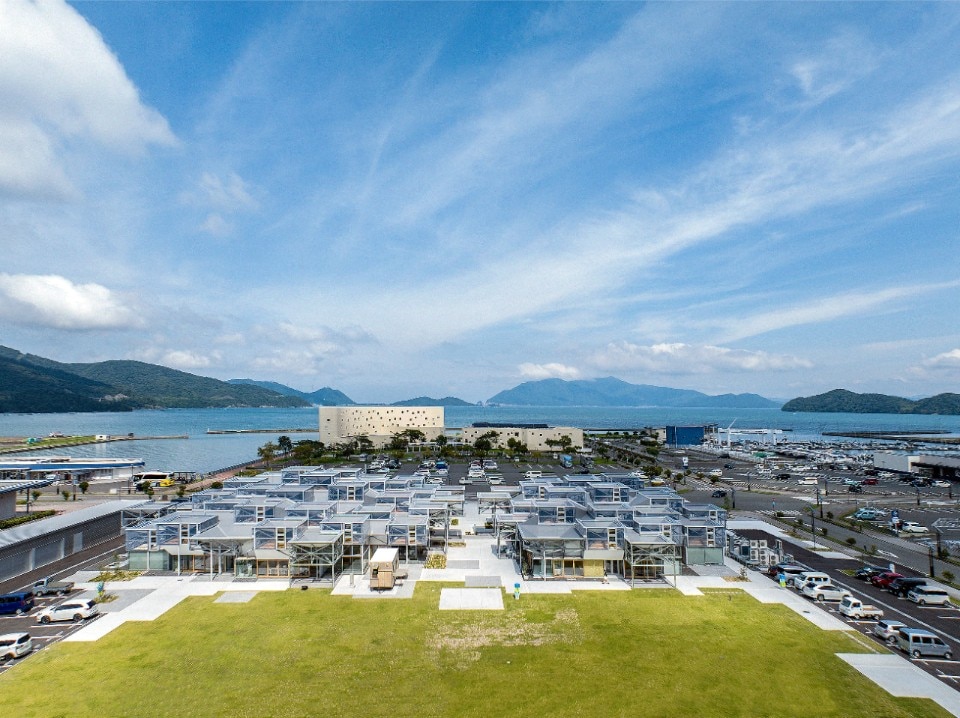
Technology is used to envelop people and draw them into these spaces. Particularly noteworthy in this sense is the conception of the roof. It is supported by 15 steel frames, all measuring 2.4 metres per side in plan and standing 2.4 metres tall, which open up at the top to form a tree-like silhouette. These elements support units set at different heights, creating a large, generous and varied space. The roof gives shape to a habitat that recalls a natural environment.
The internal surface of the ceiling combines metal frames, fibre-cement boards and cedar louvres that allow a warm and soft light to filter inside. In addition, the structure has high energy-performance characteristics. Sunlight entering through the ETFE (ethylene tetrafluoroethylene) skylights heats the air inside the units after passing through the wooden louvres. The heat is uniformly distributed in the interior thanks to a fan system, and the accumulated heat is released through the ETFE components or ventilation windows.
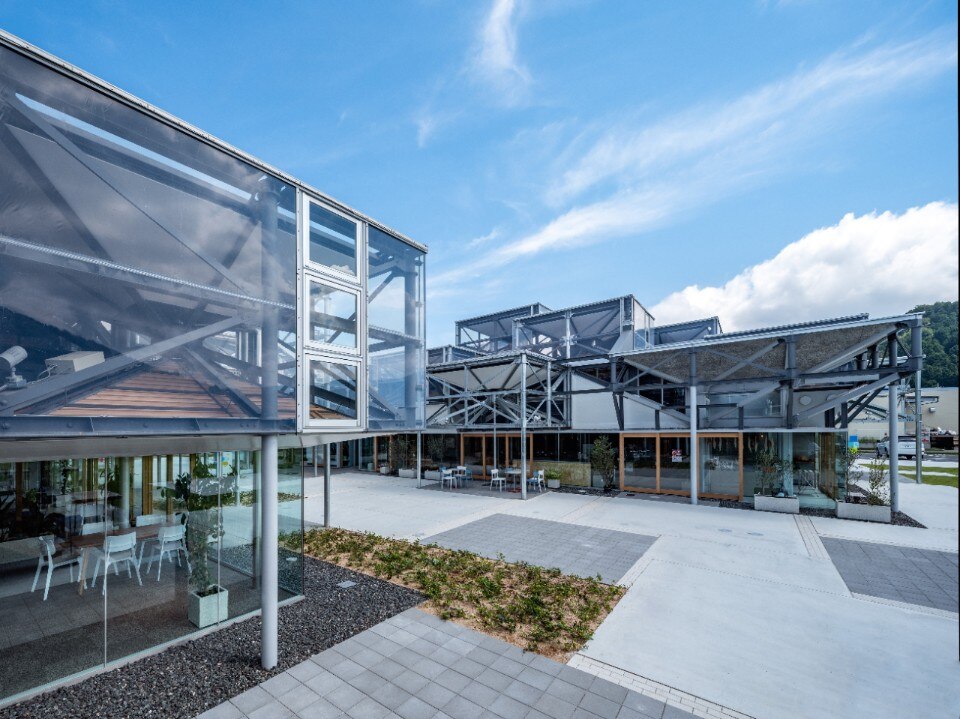
Climate comfort is also achieved with the accumulation of rainwater in underground storage tanks, from which cool air is released during the summer. The significance of See Sea Park’s roof is reminiscent of traditional Japanese wooden architecture. In the past, properly designed roofs not only provided shelter from rain and snow, but also regulated aspects such as illumination and ventilation. Historically, this ensured an intimate relationship between interior and exterior. However, this structure designed by Osamu Morishita also appears to be very different from Japanese architecture of the past. After all, See Sea Park is a future-oriented project. .
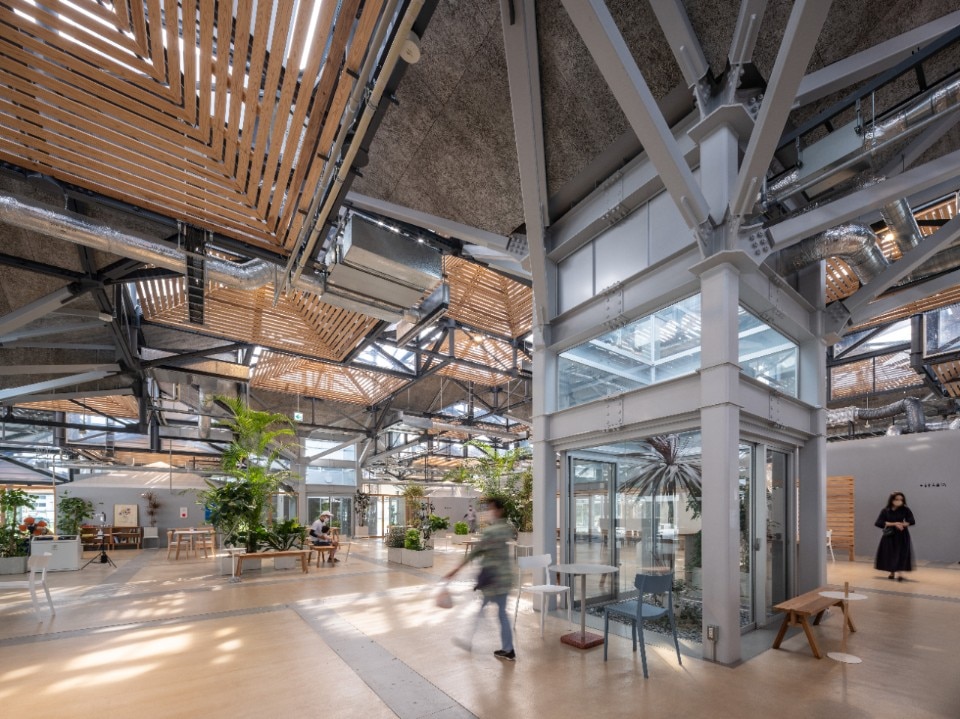
In particular, after sunset, the profile of this structure casts a sharp and in some ways innovative light into the surrounding area, which is a thrilling experience for visitors. In recent years, several construction projects in Japan have nostalgically applied traditional architectural forms, but See Sea Park refreshingly breaks away from this trend by drawing on tradition to formulate a new principle. This approach can also be detected elsewhere, with Japan currently seeing the emergence of lively encounters between traditions and the future, in a manner not unlike Metabolism in the 1960s.
See Sea Park stands out because it champions a new ideal that generously embraces human activities. Its variable roof forms create spaces with an original character: event areas equipped with park-like facilities, shops without storefront windows, and more intimate areas that encourage the flourishing of innovative commercial activities, in accordance with the competition brief that gave rise to this project. Furthermore, the absence of heavy partitions allows the creation of flexible and comfortable environments in seamless continuity with the outside. The structure will easily be able to adapt to the changing needs of the region, its nature and its people. As a result, we can think of See Sea Park as an incubator that welcomes change and encourages the diversity of the local area.


